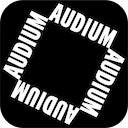Electronic Musician
January 1990
Looking Ahead
Exploring Trends, Technologies, and Issues for the ’90s
The idea that space can make a musical contribution to a performance is hardly new. As far back as the 16th century, composers and conductors placed vocalists and instrumentalists in different locations, using the physics of airspace and the intangible aspects of geometry to explore new dimensions in music. Edgard Varese carried this concept to an art form and actually collaborated with the architect Le Corbusier on the design of a building (the Philips Pavilion at the 1958 Brussels World’s Fair) where the first performance of “Poeme Electronique” would be held. Combining over 400 loudspeakers with a light and slide show, the direction from which a particular sound emanated brought a new physicality to electronic music.
Many have continued along this path, but perhaps none as arduously and lovingly as Stanley Shaff, who, with equipment designer Doug McEachern, has explored the concept of placement and movement of sound and space for over 30 years. Beginning with a mobile unit controlled by a specialized console that could route sounds to nine speakers, the pair have no designed and built their own facility in San Francisco, called Audium, which currently uses 136 speakers. It may be testimonial enough to the success of Shaff’s work that Audium still exists, after thousands of performances of seldom-changing works.
“Technology has a way of pushing us, in almost an unconscious way,” Shaff says of his life’s work. “It’s interesting to parallel the age we’re in to what was happening in the Renaissance. At the beginning of the Renaissance, artists simply did not see three dimensions when working with a two-dimensional space, or, at least, they were unconscious of the fact that it was very important visually. Then as people began to dip over the horizon and find they wouldn’t drop off to Hades, space consciously became something that was viable. And artists began to find ways to express space, visually the two-dimensional plane became three-dimensional.
“I don’t think the musician today is conscious of space, except in a very vague, intellectualized way. And that’s what Audium touches. It pushes the sound so that it becomes a viable spatial context, and you begin to sense that this is the time we’re in now, in sound.”
The design of the building itself is of paramount importance to the resulting experience for the audience. Seating is arranged in concentric circles, with the control station along the back wall, always manned by Shaff. Speakers are carefully placed everywhere — under the seats, hanging overhead, behind and in front of the audience — not at all haphazardly, but based upon the years of experience Shaff has devoted to the space.
“The overriding realization that emerged from our early endeavors was that the sound was beginning to be free, to be something quite different,” Shaff explains. “As we began to pursue that notion, to free it up as much as possible, we began adding points in space, first including more speakers and then more ways to drive the sounds through multiple speakers.
“Then the environment itself began to be important, and in a way became another kind of language — the way the audience sat, the lighting, the whole ambience — all of it began to speak of a special kind of language. The space itself is a new kind of instrument; it is something to be performed, to be shaped.
“This kind of environment challenges our perception of the way we experience our listening, even though it’s natural, in the sense that space is always around us,” he continues. “But we really magnify it. The sound itself becomes free to be itself in full time, in full space. It isn’t visual geometry; you can’t measure and divide it up in a nice, ‘inches and feet’ way. It’s a combination of points in space, but also an interior space, too, which become somewhat tied together.”
Shaff feels that this revolutionary concept of sound and space may encourage future generations to get out of their houses again and actually attend contemporary music concerts. “What Audium represents, in a way, is a place where much of contemporary music should have been performed. Part of the problem has been that we’ve been trying to put a 20th-century kind of language, which is this new technology, into a 19th-century wrapper. And it doesn’t work. Audium gives the sound an opportunity to really get to you, because you’re in the middle of it. You become a part of it.
“Audiences are in need of a new form of entertainment,” he concludes. “With television, we practically have theaters in our own homes. When people go out, they want something different; they want to be taken to a place they haven’t been before. And that’s why I feel that the environment itself is perhaps the next great adventure for the artist, to explore new avenues of creation. Audium in itself is not the thing. I see it as much more of a beacon pointing to an infinite number of new doorways through which we can walk.”
There are no commercial recordings of Shaff’s work, since a pair of stereo speakers simply cannot re-create the effect of his labor. And for similar reasons he cannot tour around the country promote the powerful imagery of his compositions. Nevertheless, his persistence has begun to reward him with national exposure, and he seems nowhere close to giving up on the dream. His vision of the future theater beckons us all to explore the compositional changes and performance possibilities opened with these beginning steps — steps into the 21st century that could be modified to fit into our own living rooms.
